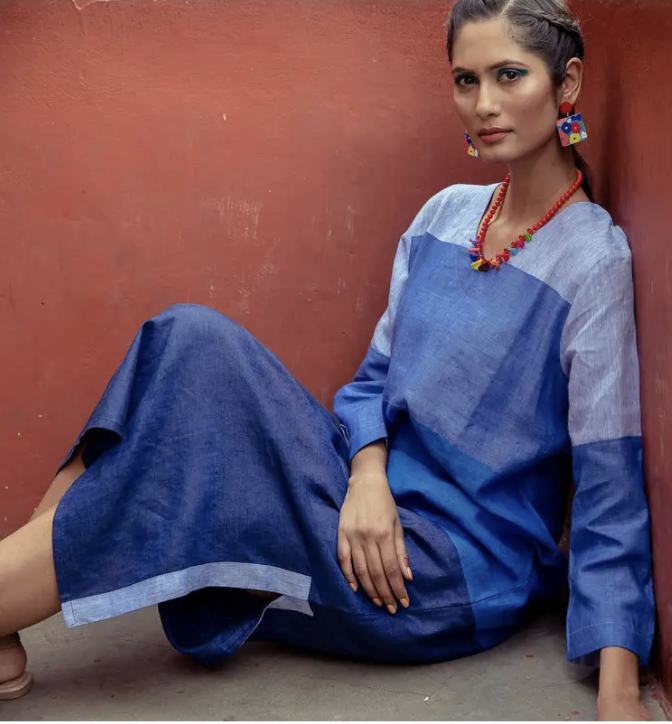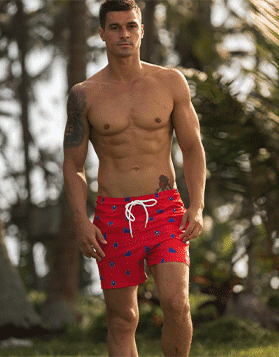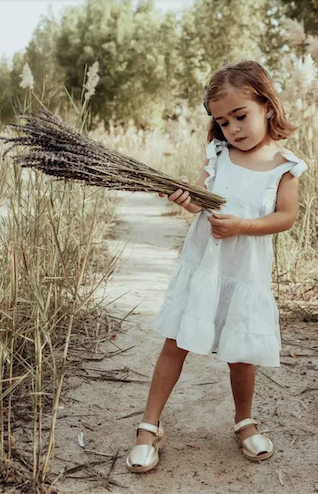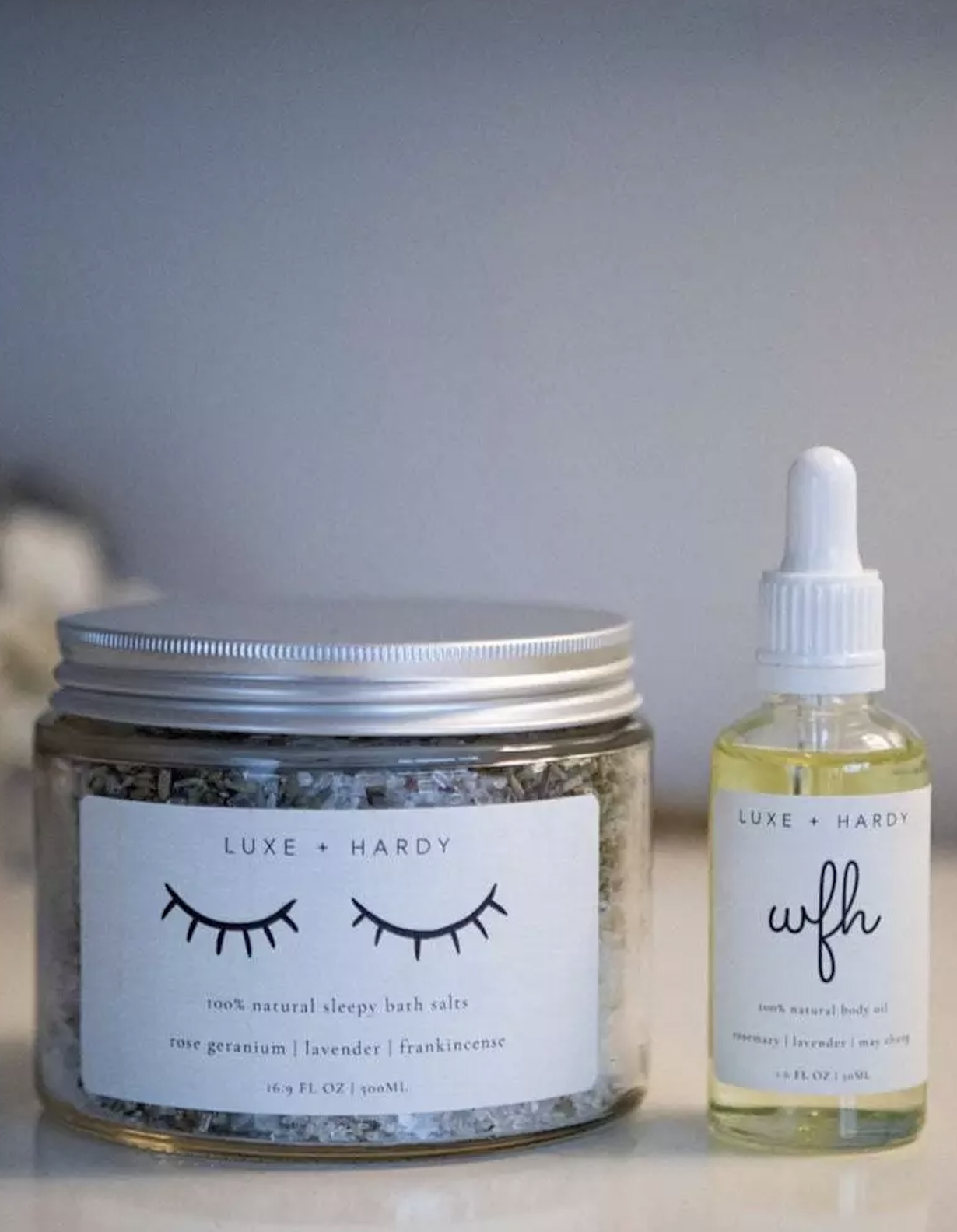What Is Sustainability In Fashion?
It’s no surprise that fashion is one of the world’s largest industries.
Why? Because we all engage with it simply by wearing clothes — from passionate fashionistas to reluctant shoppers, we all need something to wear.
Catwalks and fashion shows might trick you into thinking that it’s not a serious industry, but with an annual revenue of over $1 trillion, the apparel trade plays a major role in the global economy.
Unfortunately, it is also one of the most polluting and resource-intensive industries in the world.
Did you know that fashion is the second-largest polluter after aviation, accounting for almost 10% of global pollution? What’s more, the industry consumes 79 trillion liters of water every year and produces over 92 million tonnes of waste, feeding massively into our already overwhelming climate change issues.
Despite many organizations campaigning for awareness of these devastating environmental impacts, fast fashion continues to thrive. It relies heavily on low-cost manufacturing, regular consumption, and short-lived garment use.
We might still be far from achieving ‘zero-waste fashion’, but thankfully many multinational brands like Zara, Mango, and H&M are exploring clothing sustainability and launching more eco-friendly collections. Although a lot of it is considered greenwashing and hardly enough to make a change, it’s a good place to start.
But if we really want to tackle the existential threat of climate change, we need to seriously address the fashion industry’s unsustainable practices regarding CO2 emissions, chemical pollution, water use, and textile waste.
So What Is Sustainability In Fashion, And How Does It Work?
Slow and sustainable fashion is about meeting today’s needs for environmentally friendly practices in the fashion supply chain. And, if we go a step further, it’s also about empowering everybody involved in this chain — from farmers and garment workers to retailers and consumers.
Sounds great, right? Now let’s see how it works.
While sustainable fashion sounds like a trendy catchphrase, historically speaking, our clothes used to be sustainable. About a century ago, people only owned a few garments made from the natural materials they had on hand. When those clothes got too worn out to wear, they repurposed the materials, and nothing went to waste.
Fast forward to today, some fashion companies are trying to adjust that model to meet modern demands by exploring ways to ethically source clothing using mindful production methods and revolutionary ideas.
Although nothing can be 100% sustainably made, some businesses focus on green and clean production by using organically grown fibers, such as hemp, linen, cotton, silk, and wool, instead of synthetics like polyester, acrylic, and nylon.
Natural materials are biodegradable and minimize waste by composting cleanly back into the soil, unlike synthetics that sit in landfills, continuously leaching toxic chemicals and fumes into the atmosphere. The use of natural dyes also means that less water and harmful chemicals are used in the process.
Human and animal rights are also aspects that many companies prioritize when creating their products. They focus on ethical production and fair labor practices and are often fair trade certified or vegan. Being socially conscious, they want to ensure that farmers and weavers are fairly paid for their labor, and that cultural heritage is preserved.
Second-hand vintage shops are also a rising trend that’s gaining popularity. Many stores accept old clothes for donation, reselling, or recycling to minimize waste and slow the extraction of new resources from the Earth.
Big brands like Adidas and G-Star RAW have used ocean plastic to create their apparel, while some emerging business models promote the idea of renting or swapping clothes.
Some companies choose to reduce their carbon footprint by creating clothes closer to their selling point (locally made) instead of shipping overseas. Others have installed solar panels or wind turbines to power their factories with renewable energy.
And then, there are the revolutionaries who seek creative ways of being sustainable, like making clothes that expand and contract to cater to families with growing children or developing leather from fruit waste.
Talk about modern design! Yum!
How’s The UAE Doing In Sustainability?
Let’s face it — people still tend to associate the Emirates primarily with oil.
But did you know that the Middle East is also the third-largest exporter of fashion and clothing accessories in the world?
The UAE has become a major textile manufacturing hub and, with an ever-booming economy producing luxury clothing, a key center for the apparel business.
And even though Emirati people have a thing for luxury, consumers in the UAE are becoming more and more supportive of ethical and fair trade fashion and don’t mind paying a bit more for a sweatshop-free garment.
Dialogues on sustainable and ethical fashion in the region have started, and even big fashion platforms like Fashion Forward Dubai are participating.
Just this April, the organization Fashion Revolution held its annual Fashion Revolution Week in the UAE, with a full program on why it is necessary and how to achieve a higher level of sustainability in the industry.
The aim was to raise awareness of the most pressing environmental and social issues and to call for systematic reforms to tackle pollution, low wages, human rights violations, and more.
Many local clothing brands are walking the talk by developing their products using sustainable practices and offering ethical choices to the region’s market.
But although the conversation has started and notable steps are being made, in a country where shopping is a hobby and being obsessed with designer brands is the norm, preaching the concept of ‘Buy less, choose well, make it last’ can be challenging.
So What Can We Do?
Our planet is suffering, and a lot of it has to do with how we produce and consume things. Mass production and consumerism exploit the people who make our clothes and accessories and also damage our environment.
Climate change is not a hoax — it’s happening, and it’s accelerating!
Factories pump out over 100 billion garments every year, mostly made of synthetic materials that take hundreds of years to biodegrade.
But we don’t have hundreds of years to tackle climate change! We need clothing sustainability, and we need it now!
So to answer the question ‘what is sustainability in fashion’ — it’s a burning need!
As consumers, we have the power to make a positive change by calling for more responsibility and transparency in the fashion industry.
Sustainability can be complex, but we can make a change if we’re armed with the knowledge to make ethical choices and the tools to question brands about their practices.
Put it this way — with every dirham we spend, we invest in the type of world that we want.
When we buy an outfit that comes from the exploitation of workers and the planet, we endorse fashion terrorism. But if we choose to support sustainable brands that create beautiful fashion without a harmful impact, we contribute to a better world.
Sustainable fashion isn’t just a buzzword or passing trend — it’s the fashion business model of the future that embraces our social and environmental values.
That’s right, ethical is the new posh, and it looks (and feels) good on you!
Wild Fabrik
At WILD FABRIK, we believe that fashion is a universal language through which we communicate who we are and what we stand for. With our blog entries we aim to provide you with an elegant guide to a sustainable lifestyle, packed with our experience, knowledge, and continuous research on sustainability matters. Driven by our passion for all things green, we hope to inspire you to be your own label and make conscious choices that look — and feel —good.
Is there something you’re particularly interested in reading from us? Drop us an email and let us know!
“Fashion is the second-largest polluter after aviation”

- Dubai, Festival City Mall, Crescent Drive
- +971-54-382-8897
- Mon-Sun 9.00 - 18.00
- [email protected]
- View on map






